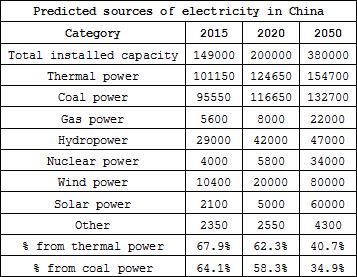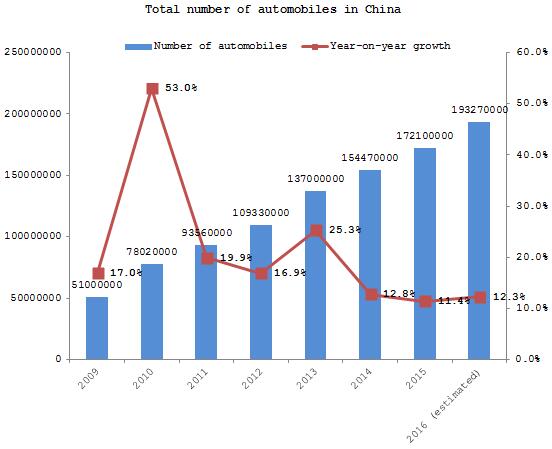Prospects for new energy vehicles in China
According to the latest version of the Blue Book of New Energy Vehicle, one of China’s most authoritative reports on the new energy car industry in China, a total of 497,000 new energy vehicles have been sold in the country since the end of 2015. As a result, China has become the country with the largest number of new energy vehicles on its roads. With beneficial government subsidies, Chinese manufacturers have been encouraged to introduce even more new energy vehicle models.
Chinese manufacturers have taken new energy vehicles as an avenue for potential development. However, many analysts doubt the validity of these hopes, as multinational manufacturers continue to develop more powerful engines, lighter chasses and more advanced intelligent technology.

However, there is one major question that many in the country still wonder: are new energy vehicles truly as environment-friendly as they are advertised to be? Exactly how much emission savings do they offer compared to traditional fuel-powered vehicles? This has not been an easy question to provide a solid answer to as there are many factors to consider.
When comparing direct carbon emissions, new energy vehicles with their total lack of emissions are clearly less harmful to the environment than their fuel-powered brethren. However, the electricity that powers new energy vehicles comes from many sources including coal, oil and natural gas. This factor also has to be considered when evaluating new energy vehicles’ effects on the environment.
As new energy vehicles increase in number, the amount of electricity consumed also naturally increases. As a result, emissions caused from growing use of the coal and oil that power electricity will also increase. To understand the true environmental costs of increased new energy vehicle usage, we have to measure how electricity is generated and what emissions are caused in its creation.
Early in March of this year, Singapore authorities fined a Tesla Model S owner a 71,400 RMB fine on the basis that his vehicle’s exceeded emission limits. According to Singapore regulations, 1 kW per hour expended by a new energy vehicle are calculated to be equivalent to 0.5 g of carbon emissions. Following that formula, the Tesla Model S, which expends 444 kW of energy, gives off of 222 g of carbon emissions. By comparison, the limit for vehicles in this segment is around 200 g of carbon emissions for every 1 km driven.
Singapore, like China, is heavily reliant on thermal power for electricity. While in Singapore most of this thermal power comes from fuel, in China the majority of it comes from coal. According to national statistics, 73% of all electricity generated in China came from thermal power, with over 94% of that coming from coal, which is responsible for much more severe emissions than fuel.
According to some studies, a typical fuel-powered vehicle is responsible for 22.54 kg of emissions for every km driven, compared to 19.45 kg of indirect emissions from an ordinary new energy vehicle. However, when around 30% of that electricity comes from sources other than coal, that figure decreases to 13.61 kg.
Furthermore, as China and other countries move towards environment-friendly sources of energy like water, wind and solar, the amount of indirect emissions generated decrease even further. However, these changes need to be taken soon as new energy vehicle usage continues to increase rapidly.

Despite the trend towards new energy vehicle sales, they are still a far way from usurping traditional fuel-powered vehicles. This leads many to wonder how new energy vehicles will be able to become the leading force in the Chinese automotive market. To this point, when convincing the public about the importance of new energy vehicles, Xiong Chuanlin, deputy secretary general of the China Association of Automobile Manufacturers emphasizes that the average Chinese vehicle consumes over twice the amount of fuel as the average vehicle in a developed country does. While a Chinese vehicle consumes 2.15 tons of fuel, petrol or diesel, per year, compared to less than 1 ton consumed by the average Japanese or German vehicle.
According to sales statistics, a total of 2 million new energy vehicles will be sold in China in 2020, with total new energy vehicles in the country totaling 5 million units by that time. Each new energy vehicle replacing fuel-powered vehicle in China will be able to offer savings of approximately 2.15 tons of fuel consumer per year. If China possesses 5 million new energy vehicles instead of fuel-powered vehicles, the country will be able to achieve annual savings of 10.75 million tons of fuel.
On that note, China imported 334 million tons of oil in 2015. The aforementioned 10.75 million tons of fuel saved in 2020 would account for just around 3% of China’s total oil imports in 2015, which is far from solving all of the country’s energy problems.
With those energy savings seeming so low on the surface, one may wonder why the government in China is so committed to pushing new energy vehicles with the introduction of considerable subsidies.
To understand the answer to this question, one has to keep in mind that China is heavily reliant on oil imports. In 2015, China exceeded the US to become the world’s largest importer of oil. In addition, China has not made the advancements in renewable energy that other countries have, further intensifying this reliance on foreign countries.

In 2015 China imported 328 million tons of oil. Approximately 264 million tons of this was consumed by automobiles, accounting for over 60% of the total consumption. By replacing traditional vehicles with new energy vehicles, China can work to reduce this excessive foreign reliance. Ultimately, these sort of political relations may be a more compelling driving force than environmental concerns.
- Tireworld Insight: Domestic tire makers eye overseas expansion
- Tireworld Insight: Price disparity severe between China's rubber exports and imports
- Tireworld Insight: China tire exports dependent on US market performance
- Tireworld Insight: SHFE rubber expected to move in tight range in short-term
- Tireworld Insight: Rubber futures to test near-term resistance at 15,000 yuan/tonne
- Tireworld Insight: China’s tire industry on track of rapid growth






